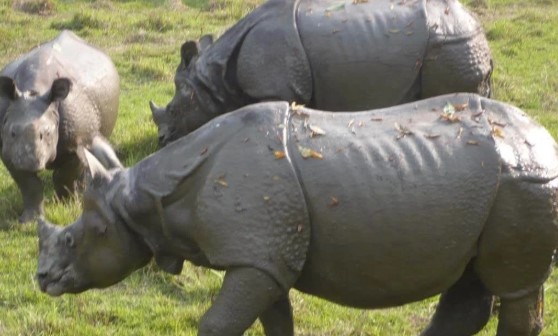Nepal is globally celebrated for its towering Himalayan peaks and trekking adventures, but nestled in the southern plains lies a lesser-known yet equally breathtaking destination—Chitwan. Ideal for nature lovers, culture seekers, and families alike, Chitwan tours provide a window into Nepal’s rich wildlife, vibrant indigenous traditions, and serene landscapes. Whether you’re looking for a tranquil escape or an adventurous expedition, Chitwan offers it all.
From close encounters with endangered wildlife in the UNESCO-listed Chitwan National Park to immersive cultural experiences with the Tharu people, every Chitwan tour is an opportunity to explore a side of Nepal far removed from the crowded mountain trails. Here’s everything you need to know to plan the perfect Chitwan tour.
Why Choose Chitwan Tours?
1. Explore Chitwan National Park
At the heart of every Chitwan tour lies Chitwan National Park, Nepal’s first national park and one of the most renowned conservation areas in South Asia. Spread across over 900 square kilometers, the park is home to:
- The rare one-horned rhinoceros
- Bengal tigers
- Leopards
- Sloth bears
- Gharial crocodiles
- Over 500 species of birds
Activities inside the park include:
- Jeep safaris
- Canoe rides along the Rapti River
- Bird watching
- Guided jungle walks
All tours are led by licensed naturalists, ensuring safety while promoting awareness of conservation efforts.
2. Cultural Immersion with the Tharu Community
A distinguishing feature of Chitwan tours is the chance to engage with the Tharu people, the region’s indigenous inhabitants. Known for their resilience, artistic traditions, and harmonious relationship with nature, the Tharu community adds a deep cultural dimension to any visit.
Most Chitwan tour packages include:
- Visits to authentic Tharu villages
- Performances of traditional stick and fire dances
- Meals featuring local Tharu cuisine
- Opportunities to learn about Tharu customs, architecture, and festivals
For those seeking authentic experiences, many eco-lodges also offer Tharu homestays.
3. Adventure Beyond the Jungle
In addition to wildlife and culture, Chitwan tours offer plenty of adventure and outdoor experiences, such as:
- Cycling through farmland and riverside villages
- Elephant breeding center visits for educational insight
- River rafting on the Trishuli or Narayani rivers (often combined in extended packages)
- Nature photography and landscape tours
These activities are ideal for travelers looking to mix excitement with exploration.
Types of Chitwan Tours
Depending on your interests and travel style, Chitwan tours come in a variety of formats:
1. Standard Wildlife Tours (2–3 Days)
These tours focus on core jungle activities—safari, canoe ride, jungle walk, and Tharu village visit. Ideal for first-time visitors.
2. Cultural Tours
Great for travelers interested in indigenous lifestyles, local food, and folk performances. They usually include longer village stays and craft workshops.
3. Eco & Photography Tours
For nature photographers and eco-tourists, these include specialized guides, sunrise safaris, and time for bird or wildlife photography.
4. Family-Friendly Tours
Tailored for children and older travelers, these tours balance activities with comfort and safety, avoiding high-risk treks or long jungle hikes.
5. Luxury Chitwan Tours
Featuring upscale lodges, private safaris, spa treatments, and gourmet meals, luxury packages offer a premium way to explore Chitwan.
Ideal 3-Day Chitwan Tour Itinerary
Day 1: Arrival and Cultural Welcome
- Transfer to Chitwan (by tourist bus, private car, or domestic flight)
- Check-in at resort or eco-lodge
- Visit Tharu village and cultural museum
- Enjoy a traditional Tharu dance performance
- Dinner and overnight stay
Day 2: Jungle Safari and Nature Activities
- Early morning canoe ride on the Rapti River
- Guided bird-watching session
- Jeep safari through Chitwan National Park
- Visit the Elephant Breeding Center
- Dinner and leisure time
Day 3: Sunrise and Departure
- Optional nature walk or cycling tour
- Breakfast and check-out
- Transfer back to Kathmandu, Pokhara, or Lumbini
When to Plan Your Chitwan Tour
The best time to visit Chitwan is:
- October to March (peak season): Dry and cool weather, ideal for safaris and wildlife viewing
- April to May (hot but good for birding)
- June to September (monsoon): Fewer tourists and lush greenery, though some tours may be limited due to rain
What’s Included in a Chitwan Tour?
Most Chitwan tour packages include:
- Round-trip transportation
- Accommodation (jungle resort, eco-lodge, or homestay)
- Meals (full board – breakfast, lunch, dinner)
- Entry fees for Chitwan National Park
- Guided safaris and cultural tours
- Professional naturalist or guide services
Always confirm the inclusions and exclusions before booking to avoid hidden costs.
Travel Tips for Chitwan Tours
- Dress in neutral colors for safaris to avoid disturbing wildlife
- Bring binoculars, insect repellent, and sun protection
- Respect local customs in Tharu villages
- Avoid single-use plastics and choose eco-conscious operators
- Book through licensed and well-reviewed tour agencies
Conclusion
Chitwan tours offer a unique opportunity to see a side of Nepal that many travelers overlook. Combining thrilling safaris, authentic cultural exchanges, and serene landscapes, Chitwan is a destination where adventure meets tradition. Whether you’re traveling solo, with a partner, or as a family, there’s a tour tailored for your interests, pace, and budget.
With the added benefit of sustainable tourism options and community-based experiences, a tour of Chitwan is more than just sightseeing—it’s a meaningful journey that supports conservation and cultural preservation. If you’re planning your next Nepalese adventure, don’t just look up—look south to Chitwan.
Key Takeaways
- Chitwan tours blend nature, wildlife, culture, and soft adventure.
- Chitwan National Park is home to rare species like Bengal tigers and one-horned rhinos.
- Cultural elements include visits to Tharu villages, dances, and cuisine.
- Best time to visit is from October to March.
- Tours range from budget to luxury, with options for families, photographers, and eco-tourists.

